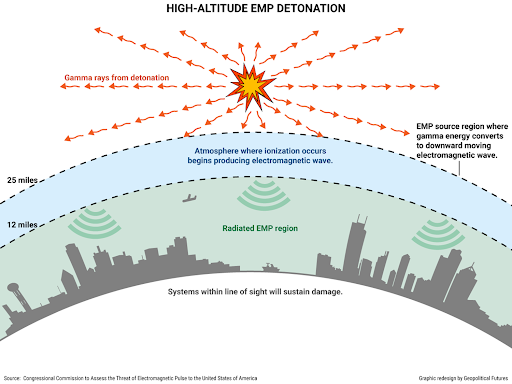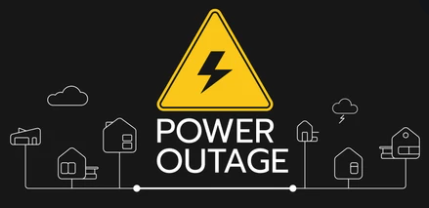
An Electromagnetic Pulse (EMP) is a short burst of electromagnetic energy causing a disturbance. It is considered a low probability, high consequence event meaning that it rarely occurs, however, when it does, the outcome can be severe. An EMP can be caused by either an intentional attack or a naturally occurring Geomagnetic Disturbance (GMD).
Intentional EMP attacks can utilize nuclear or non-nuclear weapons and are detonated at a high altitude with the intention of destroying electronic devices over a widespread area. The effects can vary depending on the type of weapon used, the altitude of detonation, and where it occurs. A naturally-occurring GMD occurs when plasma from the sun and its embedded magnetic field reaches Earth. This can also vary in severity based on the weather conditions and other environmental factors.

EMP and GMD events are not directly harmful to people, however, they can both disrupt daily life through the loss of power, cell service, communications equipment, water and wastewater systems, financial systems, emergency/medical services, and modes of transportation.

Prepare by following the four steps of emergency preparedness:
- Be informed - Check the latest news and weather forecasts to be aware of current conditions. You can also sign up to receive emergency alerts at https://alertannearundel.civicready.com/ and follow us on social media for general preparedness tips. With advanced warning, you can unplug power, data, and antenna lines from spare equipment. You can also turn off equipment that cannot be unplugged and is not actively being used.
- Make a plan - know who to contact in an emergency and how you will communicate if cell service isn’t available. This hazard can also impact landlines, radios, and internet service, so plan for disrupted communications. You should also define a meeting spot for you and your family in case you can’t communicate after an electromagnetic event.
- Build a kit - Be sure to include non-perishable food, plenty of water, first aid supplies, and other basic necessities in case you need to evacuate or shelter in place for an extended period of time. Consider having a backup power source such as a generator with extra fuel. For more items to add to your kit, check out our “Build a Kit” video. Remember that this hazard can affect your ability to travel and purchase items, so it is good to have everything stocked before disaster strikes.
- Get involved - Before any disaster strikes, you can sign up for CPR and AED, First Aid, Stop the Bleed, and other courses that can help teach you life-saving skills. Once you are safe, check on your neighbors and loved ones, especially since they may not be able to call for help. Get to know your immediate neighbors and work together to gather resources that could help in an emergency.
